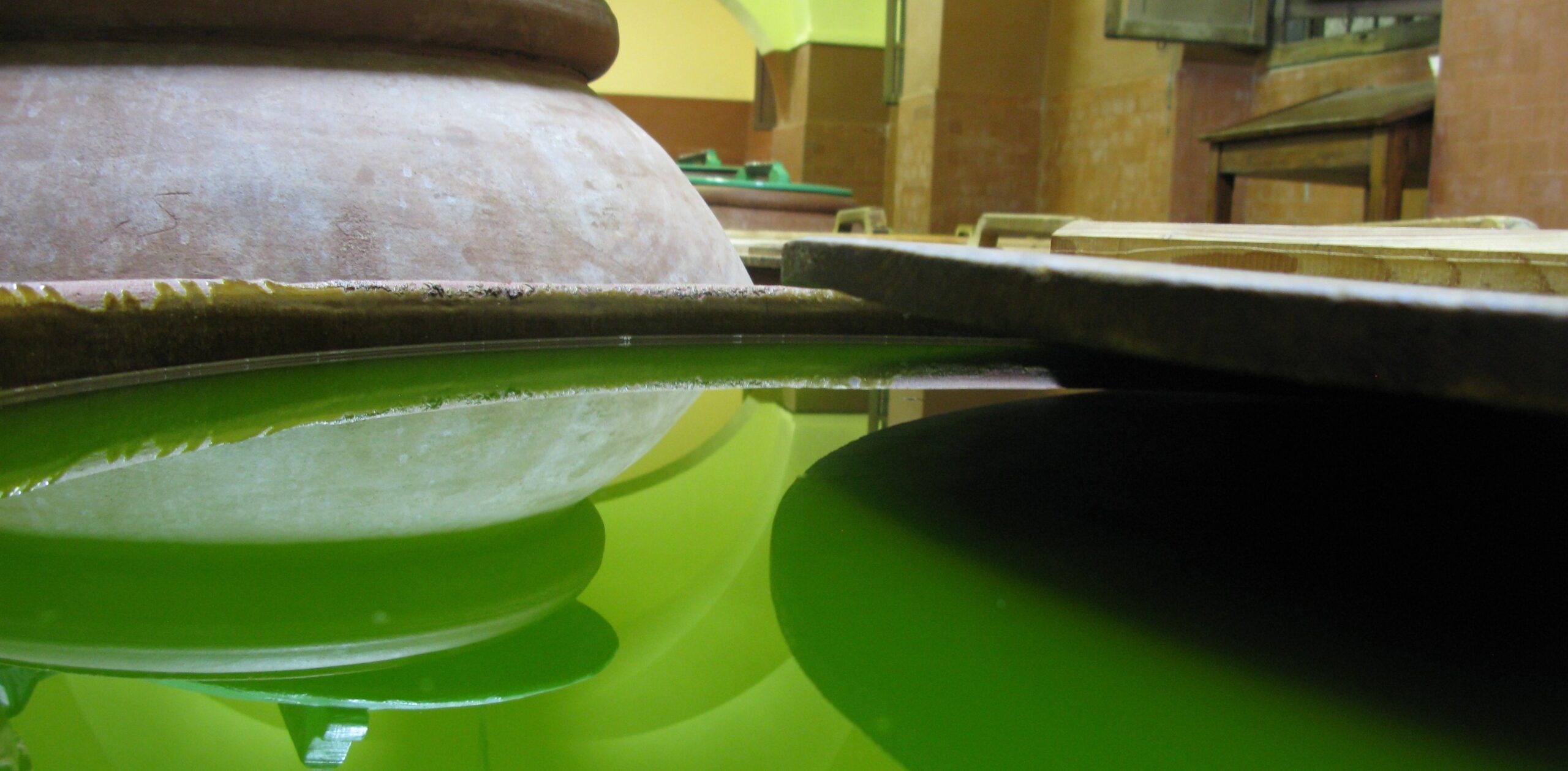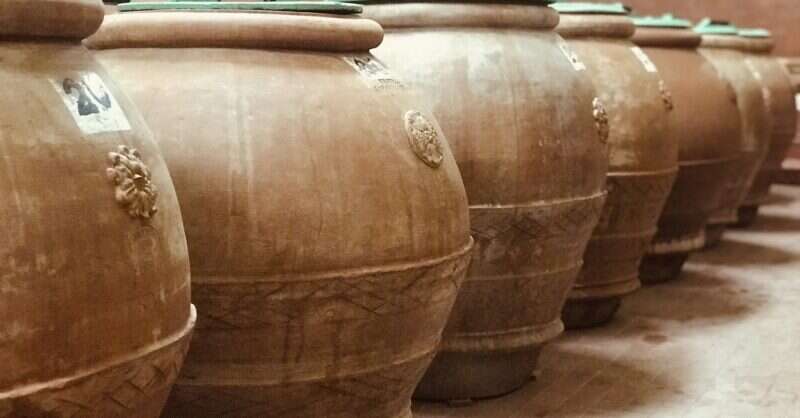Every November, one of the UK’s leading Italian wine importers, Liberty Wines, hosts a tasting of new-season Tuscan olive oils (and corresponding wines) over lunch at London’s River Café – an event attended by the producers and a roll-call of well-known chefs (guests at this year’s lunch included Jamie Oliver, Henry Harris, Tomos Parry and the River Café’s own Ruth Rogers). The oils are, genuinely, straight off the presses and there’s a vitality, a vibrancy to them that I find absolutely thrilling.
Every oil, like each wine, has a distinct personality that’s shaped by terroir, vintage and olive variety. “There is as much diversity among olive oils as there is among wines,” says Liberty Wines’s chairman David Gleave, who first began supplying the River Café almost thirty years ago, when good olive oil was still almost unheard of outside of Italy.
 Poggiotondo olive groves
Poggiotondo olive groves
This annual event is one of my favorite tastings of the year – and the producers love it too, by all accounts. “Tasting the new-season oils is very special for us,” says Beatrice Contini Bonacossi of Capezzana, an estate to the west of Florence. Capezzana’s olive pickers prize the oil so much they take it as payment instead of cash. A family of five, says Conacossi, can get through around a litre of top-quality olive oil a week.
The 2025 vintage was a mixed bag – the harvest, which began in the second week of October, was on the early side. “But the quality is very good,” says Gleave, “with some excellent examples characterised by spicy, intensely perfumed notes.” All the oils mentioned here are organic.
Really pro olive-oil tasters use black tasting glasses, says Gleave, so the oil’s colour doesn’t prejudice their notes – but for me the fabulous hues, which range from olive to a jewel-like Chartreuse green, are part of the joy of this stuff.

When tasting, one noses olive oil and aerates it in the mouth in a manner very similar to wine. The flavors and piquancy are so intense, Gleave recommends sampling a maximum of eight in one flight.
First up at the tasting was the oil from Chianti’s Poggiotondo estate – it was silky and rich, with a green olive fruitiness characteristic of the Frantoio olive, which constitutes 40 percent of the blend. There was also some creamy white almond in there and a fine spiciness on the finish. Poggiotondo’s boss, Albert Antonini, is a renowned winemaker and oenologist who consults for wineries across the world. With lunch we drank his Organic Chianti Superiore 2023 – a dense, supple mouthful of juicy red and black fruits and soft, fine tannins.
It’s surprising how often the style of the wine and oil correspond – a result not just of the terroir, one suspects, but also the personalities of the people that make them.
The wines and oils of Fontodi, in the heart of Chianti Classico, were particularly in tune – united by a style that was quite assertive and complex, but also elegant. Fontodi’s flagship oil is 70 percent Correggiolo, an ancient Tuscan olive variety (also known as Frantoio) that produces intensely green oils with a grassy, peppery flavour. At lunch, after the tasting, we had it drizzled over ricotta and raddichio.
 Selvapiana olive groves
Selvapiana olive groves
Fontodi also makes – more unusually – a single-variety Correggiolo oil from three of its best groves, that’s packed with verdant notes of wild rocket, green apple and herbs. A great partner for Fontodi’s Flaccianello della Pieve 2021, a powerful 100 percent Sangiovese with a sweet-and-savory complexity. (The family has also bottled a 2025 oil for the River Café, from another of its groves, I Canonici – coming to the River Café online shop shortly).
The Tenuta I Bonsiestate (ships direct to the US) has been owned by the Budini Gattai family since the 19th century – it produces Frantoio-lead blends that are intensely fruity, fresh and balanced, rather than overtly spicy. I can imagine the 2025 oil, with its notes of green pea, cucumber, tomato and soft piquancy being wonderful with salad or crudites.
Capezzana’s house style is on the gentler side – grassy, almost meadow-y, with notes of tomato and artichoke. I particularly love the hazy, unfiltered oil which has a textural creaminess. Just beware the short shelf-life of unfiltered oils, says Gleave – they’re best used in the first couple of months after pressing.
 Capezzana’s Chartreuse oil
Capezzana’s Chartreuse oil
Selvapiana in Chianti Rufina makes some of the finest wines in Chianti Classico – “the cool breezes that blow down the Sieve Valley create exceptional wines with finesse and definition few others can match,” says Gleave. And Selvapiana’s bright-green olive oil is similarly vivid. Derived almost entirely from the herbaceous Frantoio olive, it combines juicy green tomato and artichoke notes with fresh cut grass and a wonderfully peppery finish.
The estate’s top wine, the single vineyard Vigneto Bucerchiale Chianti Rufina Riserva 2022 is lush and delicious with vibrant raspberry and spiced cherry fruit; the tannins are supple and silky with a long, fine finish that’s the hallmark of the estate.
“There’s been a revolution in winemaking in Italy in the last fifty years,” says Gleave, “and now we’re seeing a revolution in olive oil too – fruit selection has improved massively in wine and that’s now also happening with olive oil.”
Related Story

Production of these oils is very limited – think of them just like fine wines. They’ll be hitting the shops in December and January, so keep your eyes peeled. The River Café also often has a selection on its online shop, and also runs an olive oil subscription service for those in the UK. I can think of no better gift.


Dining and Cooking